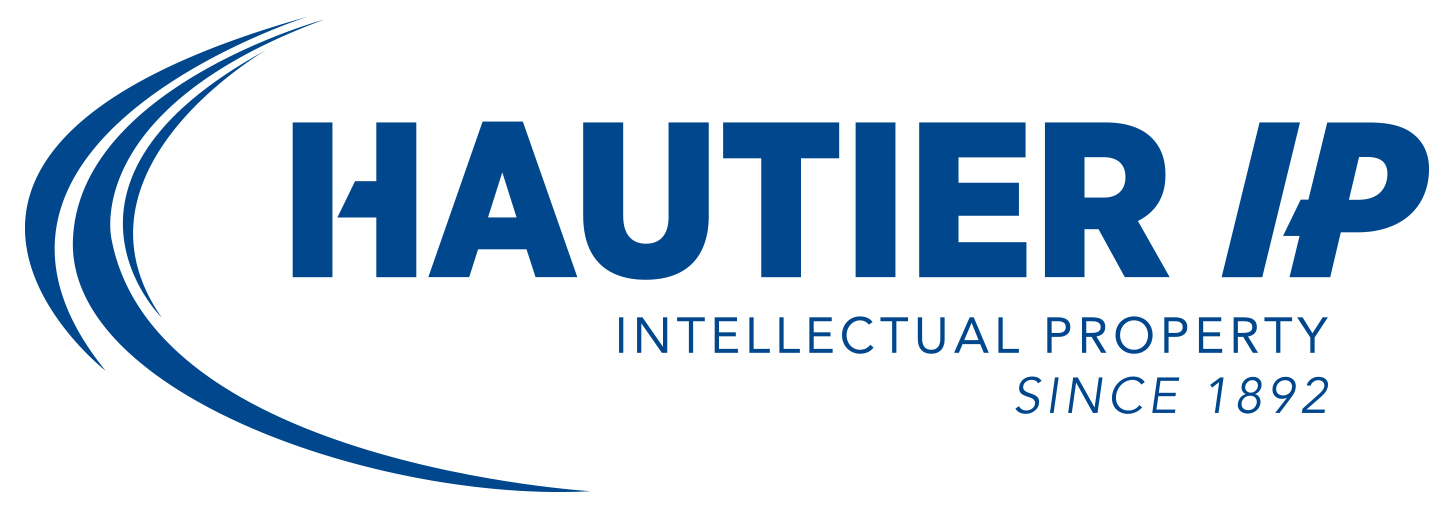Unitary Patent
And Unified Patent Court
Effective June 1, 2023
UNITARY PATENT PRESENTATION
The European unitary patent offers simplified and uniform protection across several European Union countries.
From June 1, 2023, European patent holders will be able to choose to apply for unitary effect and thus obtain protection in the following 18 countries:
France, Germany, Austria, Belgium, Bulgaria, Denmark, Estonia, Finland, Italy, Latvia, Lithuania, Luxembourg, Malta, the Netherlands, Portugal, Slovenia, Sweden and Romania.
The European patent with unitary effect will thus have legal effects in all participating Member States. The advent of this single and uniform European title contrasts with the current fragmented system of national validations, which is materialized in the form of an existing European patent through a series of individual national patents.
In addition to extended geographical coverage, the new system promises:
- lower costs,
- simplified management and
- enhanced legal protection,
thereby offering a more effective and cost-effective way to protect and promote inventions at EU level.
Finally, the EU Patent Body has gained a legal tool that is intended to be strengthened and which is poised to become a real competitive asset for companies present on the territory.
*As of September 1, 2024. This number is expected to increase in the future in line with the ratification of the texts on Patents with Unitary Effect by new European Union States for future unitary patents
How to obtain a unitary patent ?
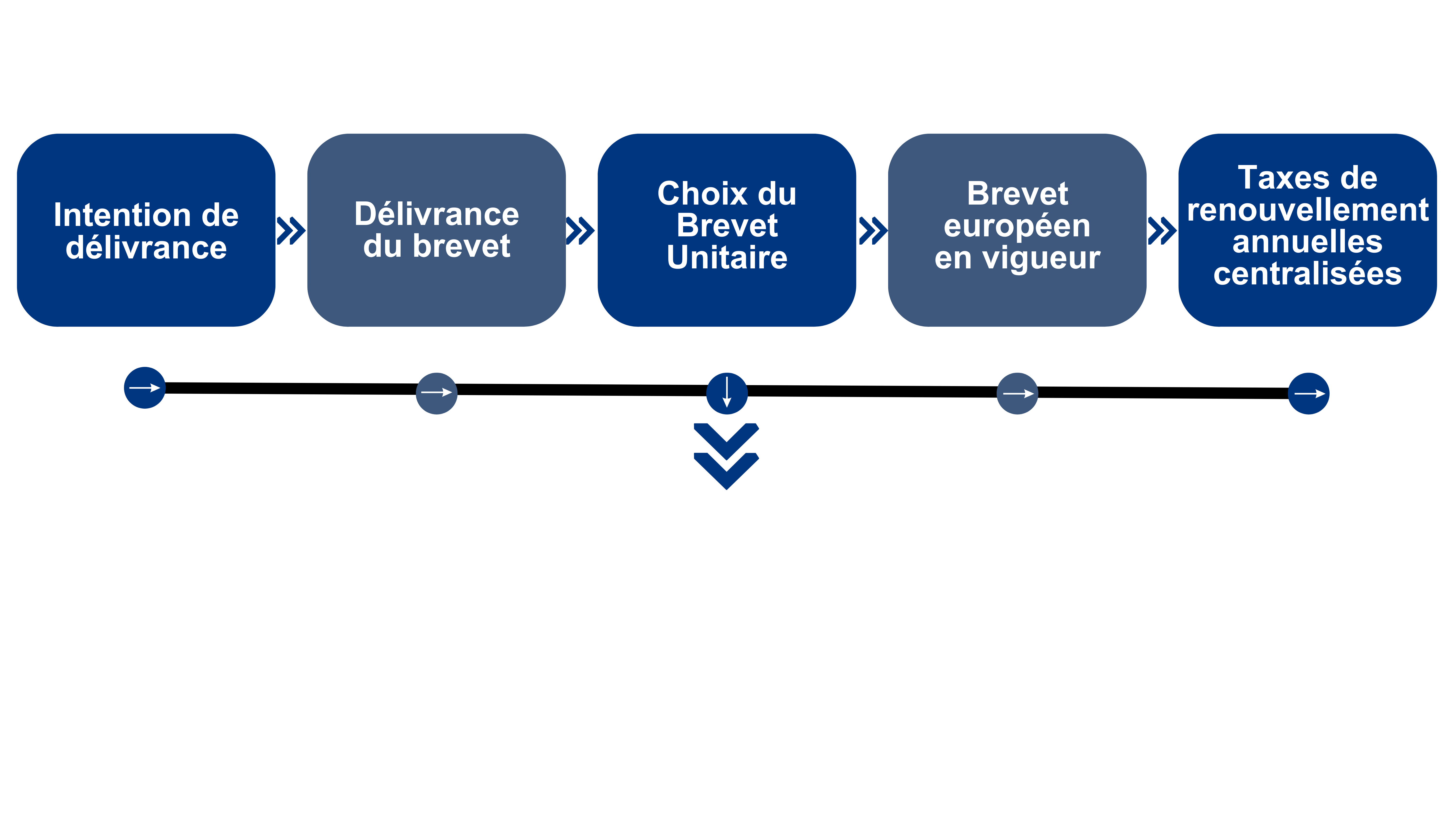
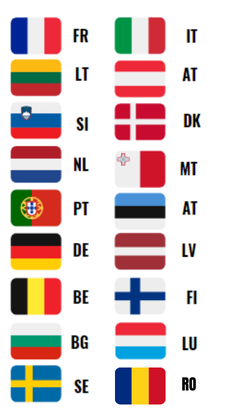
Before the European Patent Issuance
- Only 1 patent application to the EPO
- 1 single examination procedure
- 1 single patent grant
After the granting of the European Patent
- 1 single patent for 18 countries
- 1 centralized annual tax
- 1 competent court (UPC)
- Caption :
- 17 States participating in the Unitary Patent
- Unified Patent Court (UPC): Central Division in Paris
- Cabinet HAUTIER IP
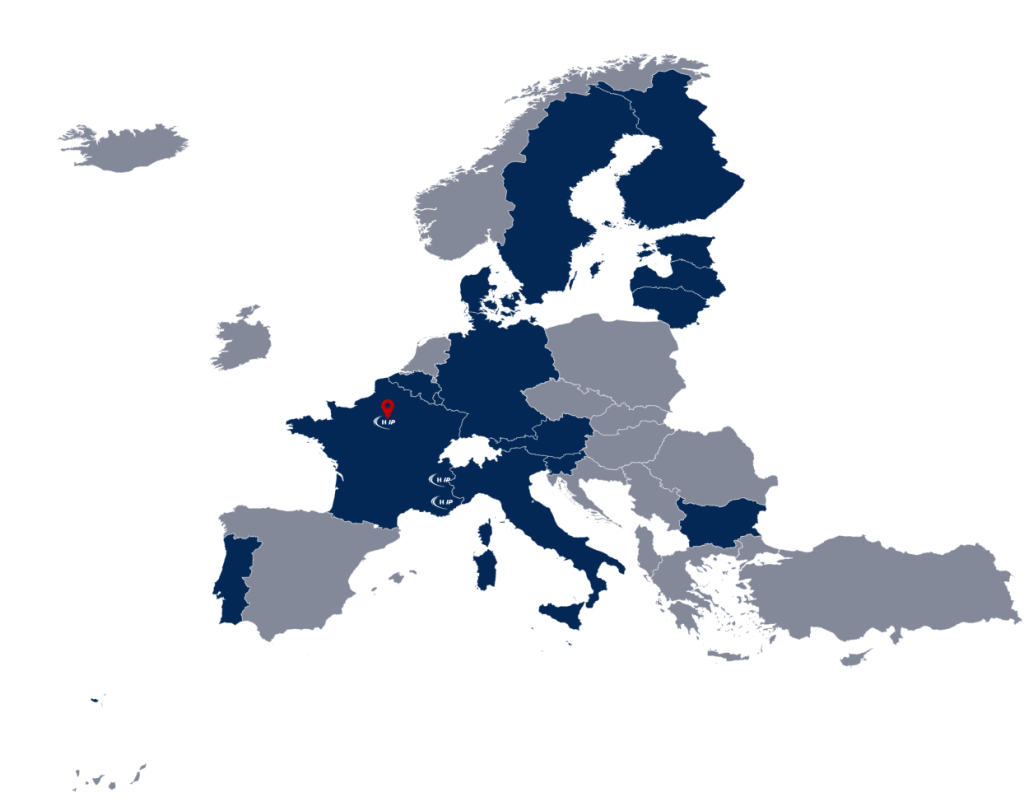

Caption :
- 18 States participating in the Unitary Patent
- Unified Patent Court (UPC): Central Division in Paris
- Cabinet HAUTIER IP
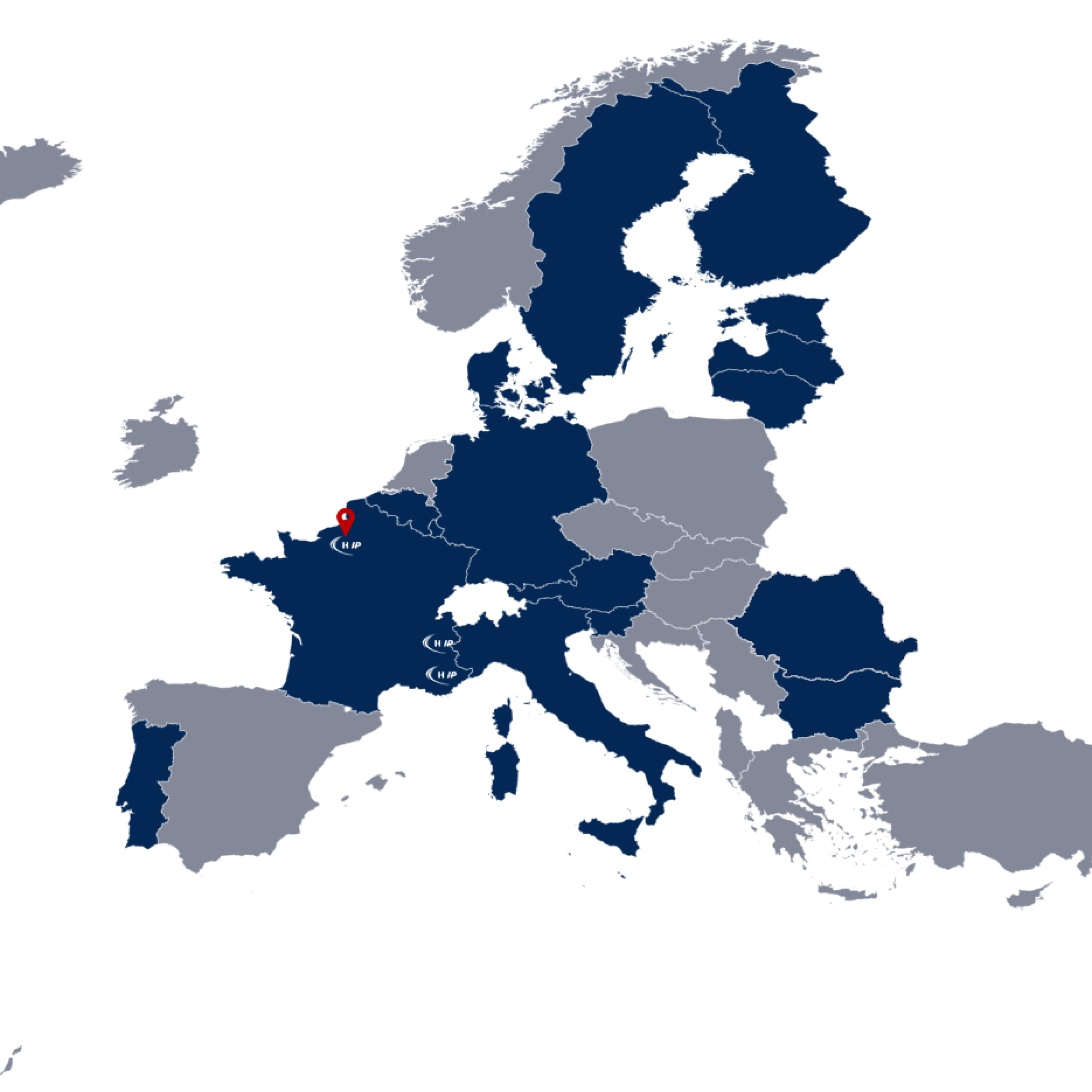
List of participating States
LIST OF STATES PARTICIPATING IN THE UNITARY PATENT (18)
Countries shown in dark blue on the map on the left:
Germany, Austria, Belgium, Bulgaria, Denmark, Estonia, Finland, France, Italy, Latvia, Lithuania, Luxembourg, Malta, Netherlands, Portugal, Slovenia, Sweden and Romania.
LIST OF EPO MEMBER STATES (39)
Albania, Austria, Belgium, Bulgaria, Switzerland, Cyprus, Czech Republic, Germany, Denmark, Estonia, Spain, Finland, France, United Kingdom, Greece, Hungary, Croatia, Ireland, Iceland, Italy, Liechtenstein, Lithuania, Luxembourg, Latvia, Monaco, Montenegro, Macedonia, Malta, Netherlands, Norway, Poland, Portugal, Romania, Serbia, Sweden, Slovenia, Slovakia, San Marino, Turkey.
BENEFITS OF THE UNITARY PATENT
Geographical scope of protection
LARGE-SCALE PROTECTION
DIFFERENCE IN COMPARISON WITH THE CURRENT NATIONAL VALIDATION SYSTEM
• In case of dispute, prosecution of the infringer in each of the validation countries: budget, time, high contingencies.
Simplifies formalities
UNITARY PATENT APPLICATION TO A ONE-STOP-SHOP
DIFFERENCE IN COMPARISON WITH THE CURRENT NATIONAL VALIDATION SYSTEM
Attractive budget
LOW COSTS, ANNUITIES CENTRALIZED AT THE EPO
DIFFERENCE IN COMPARISON WITH THE CURRENT NATIONAL VALIDATION SYSTEM
• Annual renewal fees to be paid to each national office where the patent is validated.
A FEW FOCUS POINTS
Unitary patent immutability
The geographical scope of protection of the unitary patent is not likely to change over time.
The Unitary Patent is similar to a package: it is not possible to add or remove part of the territories covered during the life of the patent. This means that it is not possible to reduce the annuity budget over time by removing countries. Moreover, the proprietor may not assign the rights he holds in one of the countries covered by the unitary patent. However, the holder may grant licenses for the use of rights for one or more territories.
Lack of certain strategic states
The absence of certain strategic States of this system, such as the United Kingdom or Spain, should be underlined. The Unitary Patent effectively covers only 18 States*.
At the same time, the classic European patent and the current validation system allow protection in 39 states*. In fact, holders should take this into account when developing their choice of coverage post-grant.
As such, the current validation system will always have certain appeal alongside the unitary patent,
especially in the early stages (the two strategies can be combined).
Risks in the event of patent cancellation
The unitary nature of the European patent with unitary effect is likely to entail a risk of cancellation of the title on a large scale.
In addition, disputes relating to European unitary patents will no longer be settled at national level, according to the conventional judicial procedure, but brought before a new jurisdiction, the UPC (Unified Patent Court). The exclusive jurisdiction of the UPC involves the risk of annulment of the unitary patent in all territories in which it produces legal effects, for example in the context of a counterclaim for nullity.
The budget associated with the infringement actions, which will therefore have to be conducted before the UPC, is also a point of focus. This budget will often be higher than the budget associated with an individual national action.
POST-GRANT STRATEGY
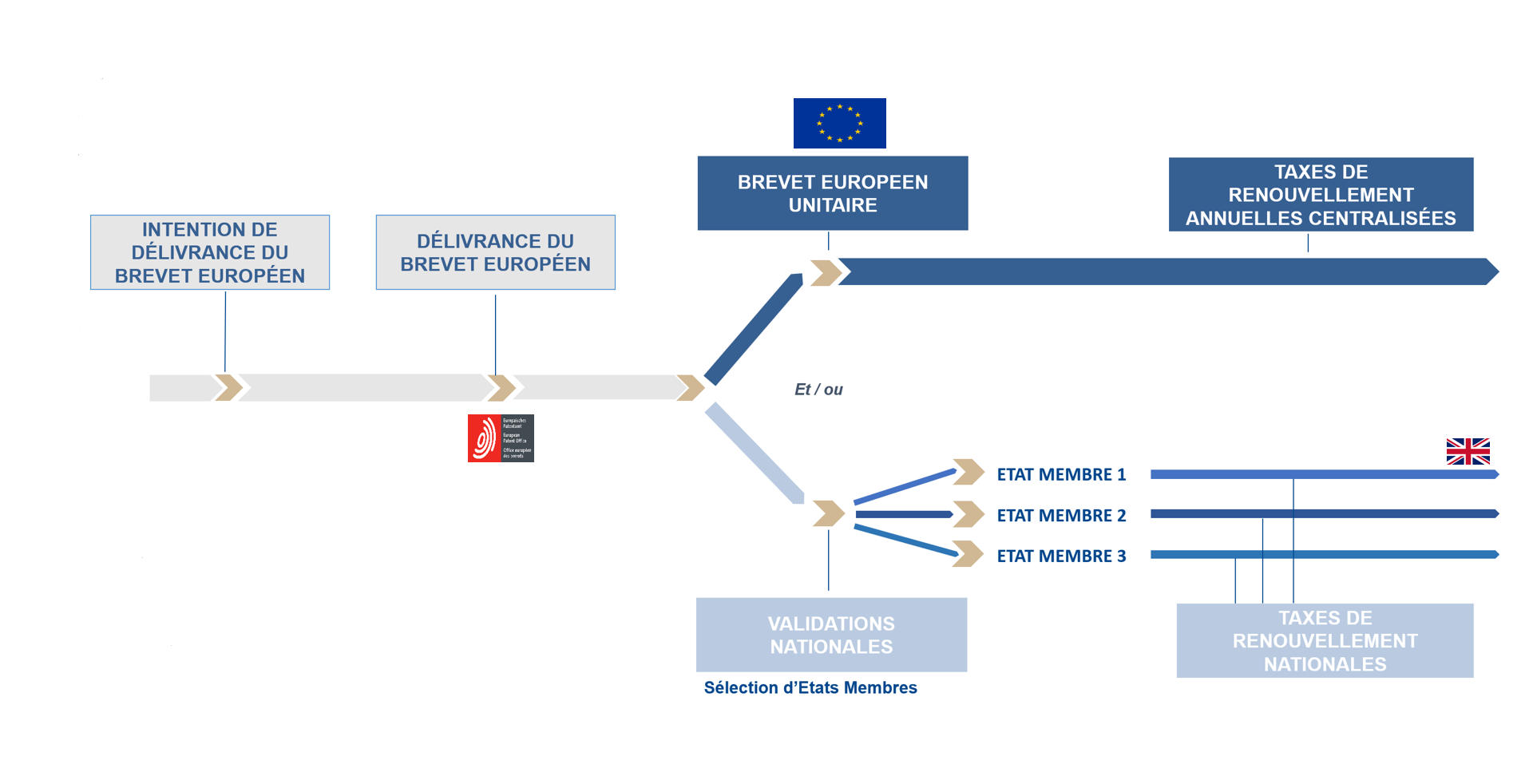
What strategy should be adopted for your pending European patent?
To date, the European Patent Office is examining patent applications and issuing European patents (illustrated in gray in the diagram).
When the patents are issued, the holders select the Member States (choice of 39) in which the European patent will be validated: these are national validations. Patents will only have legal effect within the validating States, as long as the renewal fees are paid annually to each national office.
With the unitary patent: the examination and issuance process will not change! The European Patent Office will continue to review applications and issue European patents. However, once the European patent is issued, the patent holder may apply for the unitary effect.
The post-grant strategy of the Unitary Patent (shown in dark blue on the diagram) can also be combined with the validation strategy (in sky blue on the diagram).
New Specialized Patent Judiciary European Patents
The
Unified
Patent
Court
New Specialized Patent Judiciary European Patents
The
Unified
Patent
Court
UPC
The unified patent court is competent to deal with disputes concerning European patents (subject to unitary effect or not), in particular in terms of infringement and nullity. What is the goal?: Dispute handling with a single body.
The scope of jurisdiction of the UPC is identical to that of the unitary patent: 18 countries at present.
This jurisdiction was established in particular to address the following pitfalls:
- The need to undertake multiple actions in different countries;
- The lack of harmonized case law;
- The costs and complexity associated with patent disputes.
- Caption :
- 17 States participating in the Unitary Patent
- Unified Patent Court (UPC): Central Division in Paris
- Cabinet HAUTIER IP
- Caption :
- 17 States participating in the Unitary Patent
- Unified Patent Court (UPC): Central Division in Paris
- Cabinet HAUTIER IP
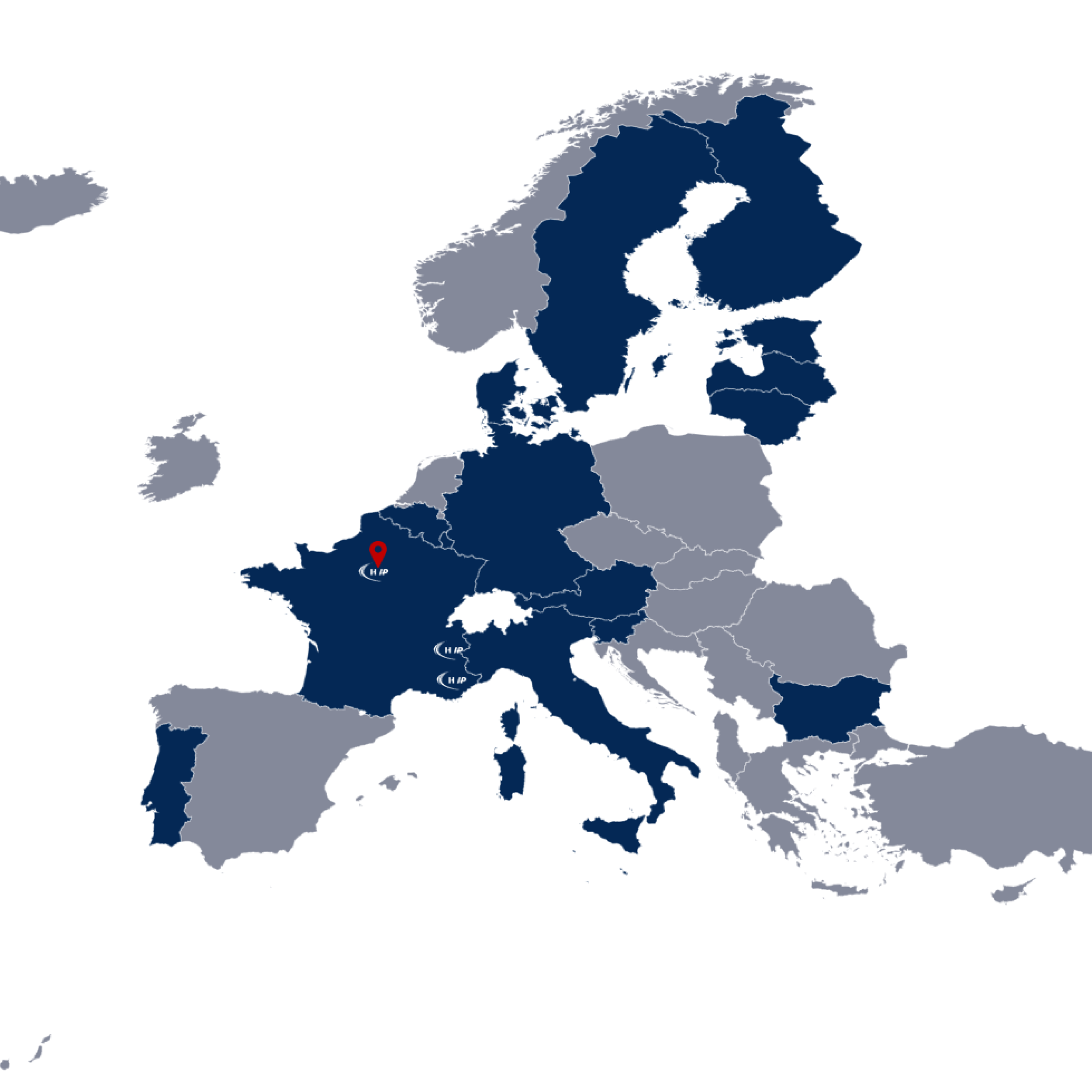
- Caption :
- 18 States participating in the Unitary Patent
- Unified Patent Court (UPC): Central Division in Paris
- Cabinet HAUTIER IP
BENEFITS OF THE UPC
Centralized tool
DECISION ON THE MERITS GIVEN ON A LARGE SCALE
It’s a real revolution! For example, the amount of damages will be determined by the UPC taking into account the acts of infringement committed in all States where they have taken place.
DIFFERENCE IN COMPARISON WITH THE CURRENT SYSTEM OF NATIONAL JURISDICTIONS
• Increase in defense proceedings and legal unpredictability.
Fast tool
DECISION ON THE MERITS GIVEN IN LESS THAN ONE YEAR
DIFFERENCE IN COMPARISON WITH THE CURRENT SYSTEM OF NATIONAL JURISDICTIONS
Attractive budget
STREAMLINED DEFENSE AND PROCEDURAL COSTS
DIFFERENCE IN COMPARISON WITH THE CURRENT SYSTEM OF NATIONAL JURISDICTIONS
A FEW FOCUS POINTS
Risks in the event of patent cancellation
- Invalidation of a patent in all States of the unitary patent by a single court decision.
Complex procedural rules and shopping forum
- The UPC’s structure with local, regional and central divisions as well as the distribution of technical skills between different sections do not avoid the risks of “forum shopping”.
- The UPC will consist of a court of first instance (headquarters of the central division in Paris), an appeal court and a registry.
Exception to the exclusive jurisdiction of the UPC: opt-out
UPC’s jurisdiction is intended to apply to all European patents, whether they are pending, issued or validated, or whether they benefit from unitary effect or have been subject to national validations (so-called “conventional” European patents).
However, for European patents under examination and those subject to “conventional” national validations, this rule of jurisdiction is subject to exceptions for a transitional period of seven years, which may be extended by another seven years.
During this so-called transitional period, the holder of a European patent may decide to withdraw their European title from the jurisdiction of the UPC. This is an opt-out request. Disputes will therefore be settled by national courts according to the current procedure.
The opt-out application may be filed at any time during this period, provided that no action has been brought before the UPC for this patent. For European patents that have not yet been issued, the “opt-out” application can be made once the application has been published. It is possible to return to the UPC system after making an opt-out request (once, unless an action has already been brought before a national court (Article 83(4) of the UPC Agreement). Finally, opt-out applications are not open to Patents that benefit from the unitary effect.
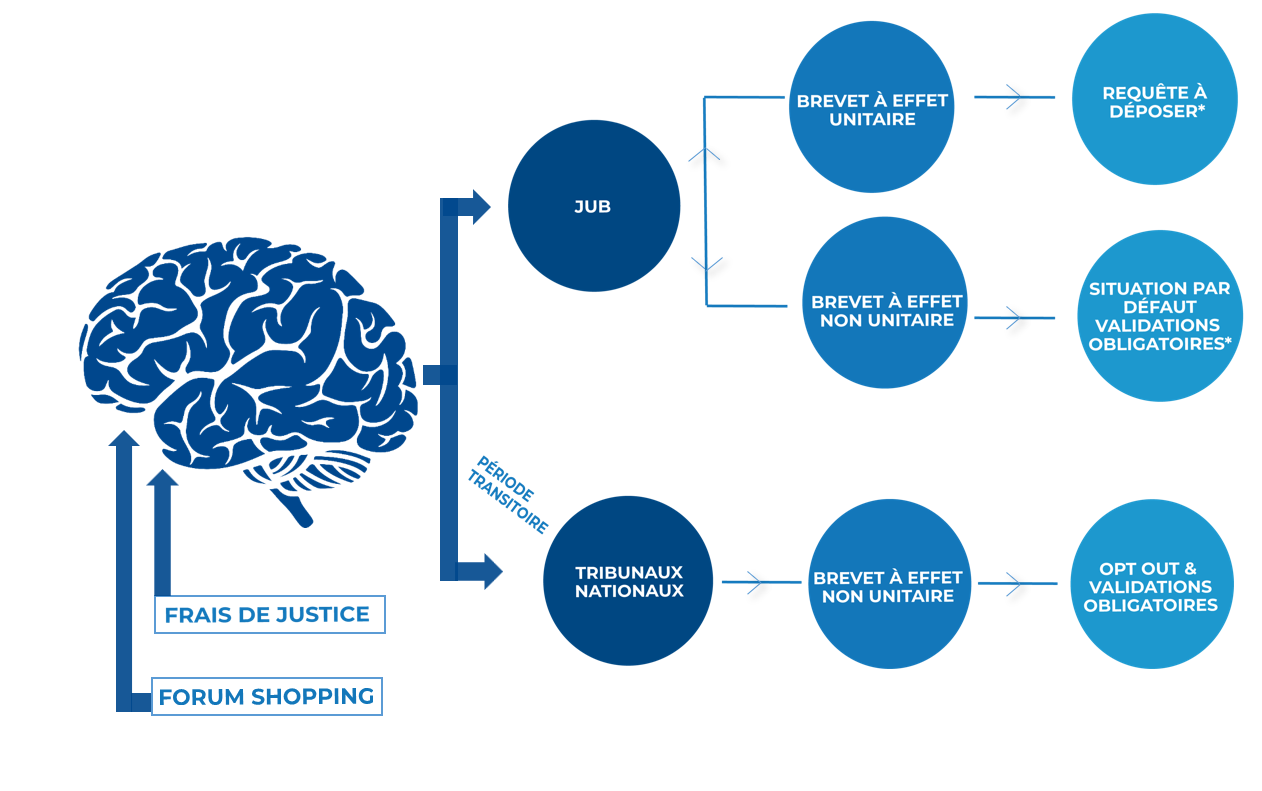
Questionnaire
FAQ
The Unitary Patent may be obtained upon application by the holder of a European patent. This application can only be filed after the European Patent is issued (one month from the date of publication of the issue in the European Patent Bulletin).
The opt-out application in the context of the Unified Patent Jurisdiction (UPC) refers to the right of the holder of a European patent to exclude its title from the jurisdiction of the UPC. This exception to jurisdiction can be made for any European Patent, regardless of the status of the procedure (pending, issued or validated). The national courts will therefore have jurisdiction to deal with disputes relating to the patent for which an opt-out application has been filed.
The examination procedure will generally continue before the EPO. Upon receipt of the issuing decision, one of the following strategies can be chosen:
- Request the unitary effect
- Validate the European Patent in several Member States
- Request the unitary effect AND Validate the European Patent in certain Member States
Unitary effect:
Your issued and validated European Patent will remain a European Patent with no unitary effect. It will only have effect in countries validated at the time of issue.
Unified Patent Court:
Your European Patent is subject to the exclusive jurisdiction of the UPC from the institution’s entry into force (June 1, 2023).
Renewal fees must be paid annually on a centralized basis on the anniversary date of filing of the European patent.
It is possible to withdraw an opt-out and return to the system of the UPC. This withdrawal can only be made once (it is not possible to request a derogation again).
If the Unitary Patent is selected, the jurisdiction of the UPC cannot be excluded.
Use of the Unitary Patent is not mandatory. National validations of the European Patent can still be carried out according to the conventional procedure.
The current system of European validations will still have certain appeal alongside the unitary patent, at least in the early stages, in particular to obtain protection within countries not participating in the system of the Unitary Patent and the UPC (Outside the EU: United Kingdom, Monaco, Switzerland, Turkey…/Non-signatories: Spain, Croatia etc.).
Once the unitary patent is obtained following the issue of the European patent, the number of countries covered is no longer likely to change. The scope of protection is “fixed” in the member countries of the unitary patent at the time of obtaining the unitary title. It will not be possible to add new countries, abandon or assign rights for some of the countries, or even benefit from protection in new countries of the unitary patent that were not members of the system when the unitary patent was obtained.
